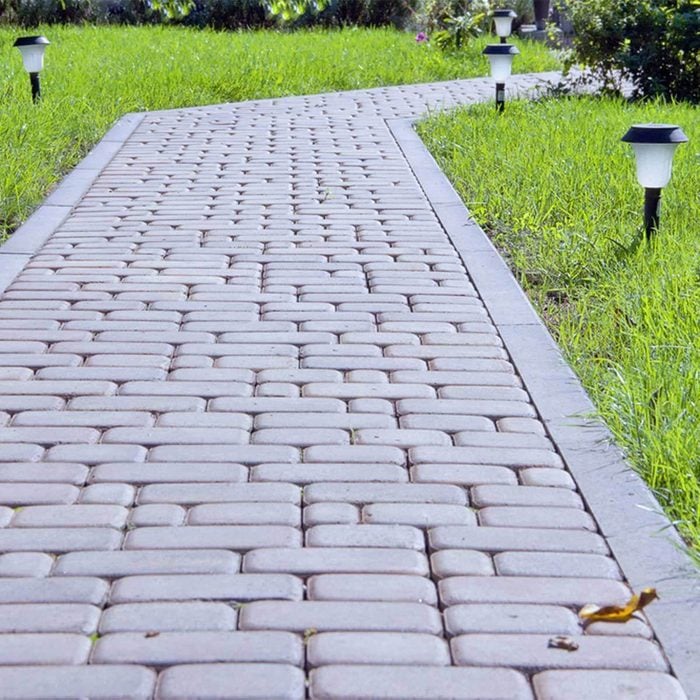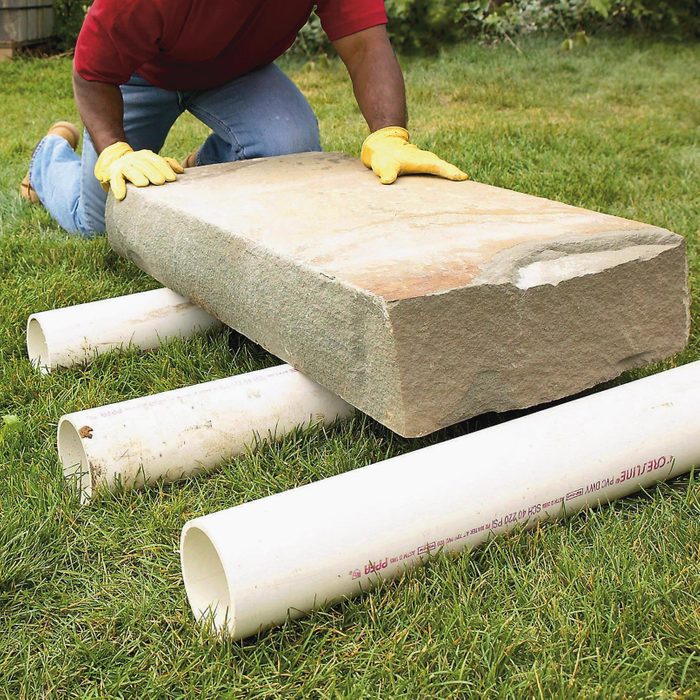
Move Heavy Stones Without Hurting Your Back
Heavy-duty two-wheel dollies work great for moving flat stones and piles of brick. Special dollies called ball carts have a curved back to fit the root ball of a tree. These are available at some rental centers and are perfect for moving boulders.
Move really heavy rocks and stones by rolling them over lengths of PVC pipe, like in the photo above.
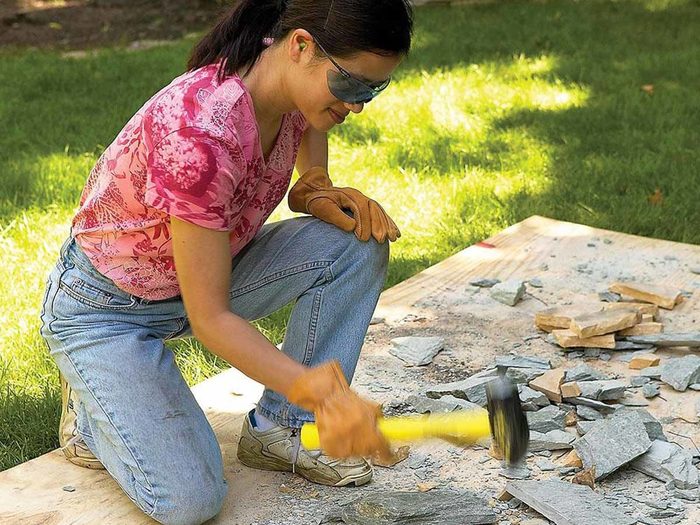
Protect Your Grass
Bricks and stone can really tear up grass. If you’re not careful, you’ll have to lay new sod. Plywood keeps shards and soil from mingling with grass and makes it easy to clean up with a shovel. You can also prevent wheelbarrow ruts by covering the route with strips of plywood.
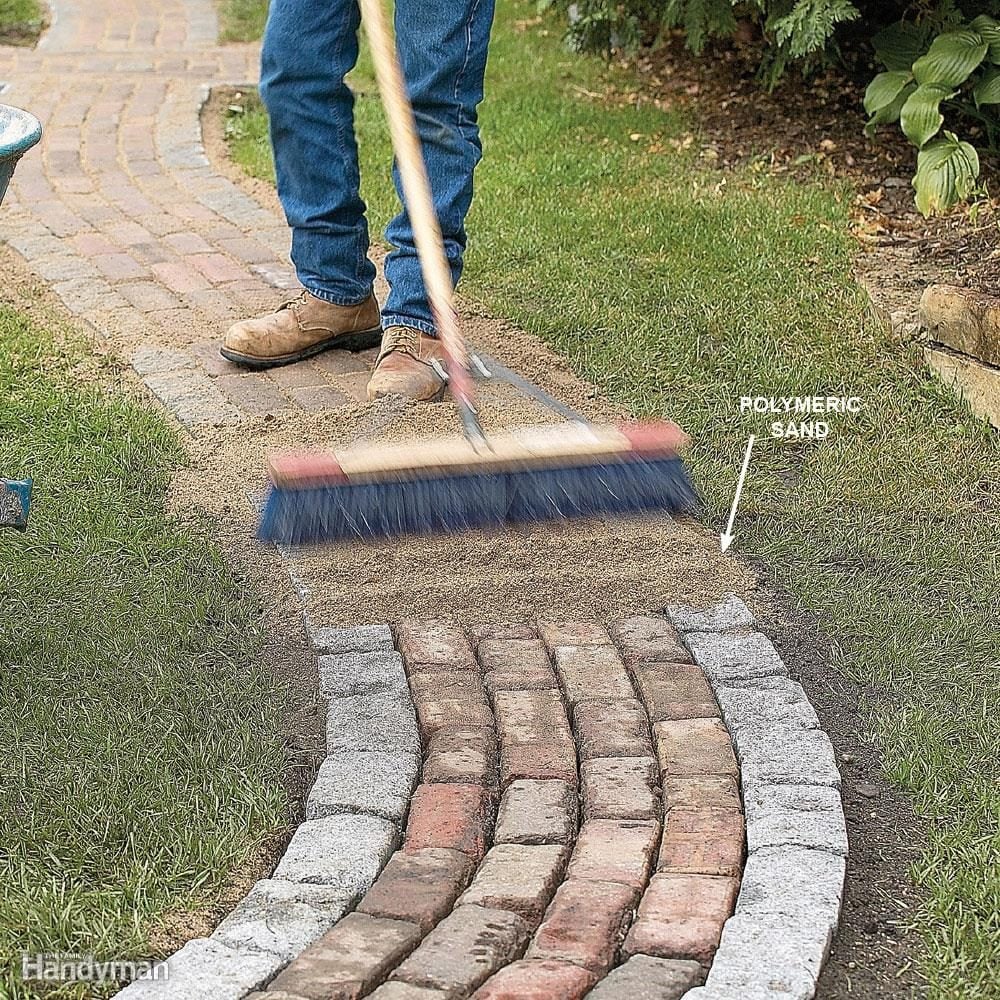
Keep Sand Between the Pavers
Dry sand tends to get washed away or swept out of paver brick and stone patio joints. One solution is to use special polymeric sand that binds together when wetted.
You can buy the polymeric additive and mix it with dry sand yourself, or you can buy premixed bags of sand. Premixed sand is the most convenient solution. A bag covers about 120 sq. ft. on paver bricks. Make sure there is no sand on the surface of the brick or stone before you wet it.
Another option is to apply a stabilizing sealant after you finish the walk or patio. The sealant soaks into the sand and glues the grains together. Sealing a patio helps prevent staining from spilled red wine or greasy spills from the grill.
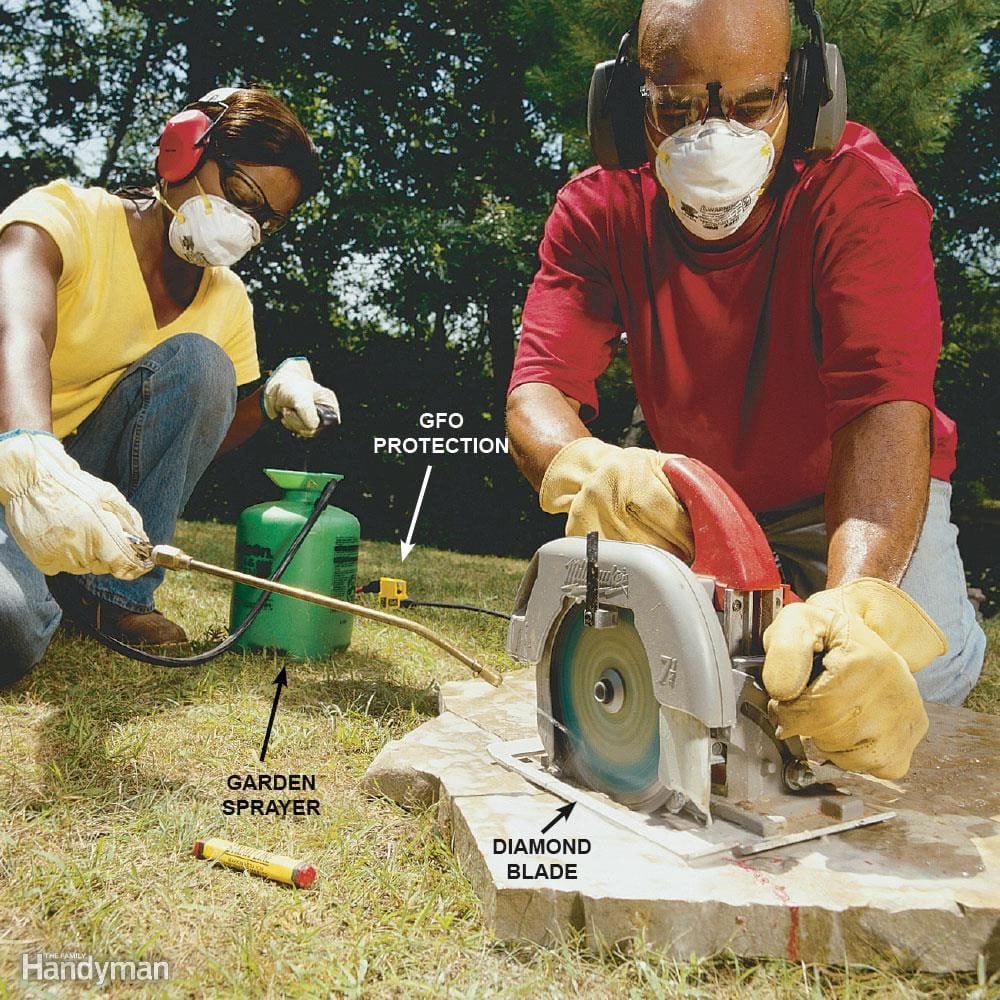
Cut Down on Dust
Spray water on the diamond blade when you’re cutting concrete, bricks or blocks. The small, controllable stream from a garden sprayer works best. The water also cools the blade and speeds the cutting process. Make sure the saw is double insulated or has a grounded plug and is plugged into a working GFCI outlet or GFCI-protected cord.
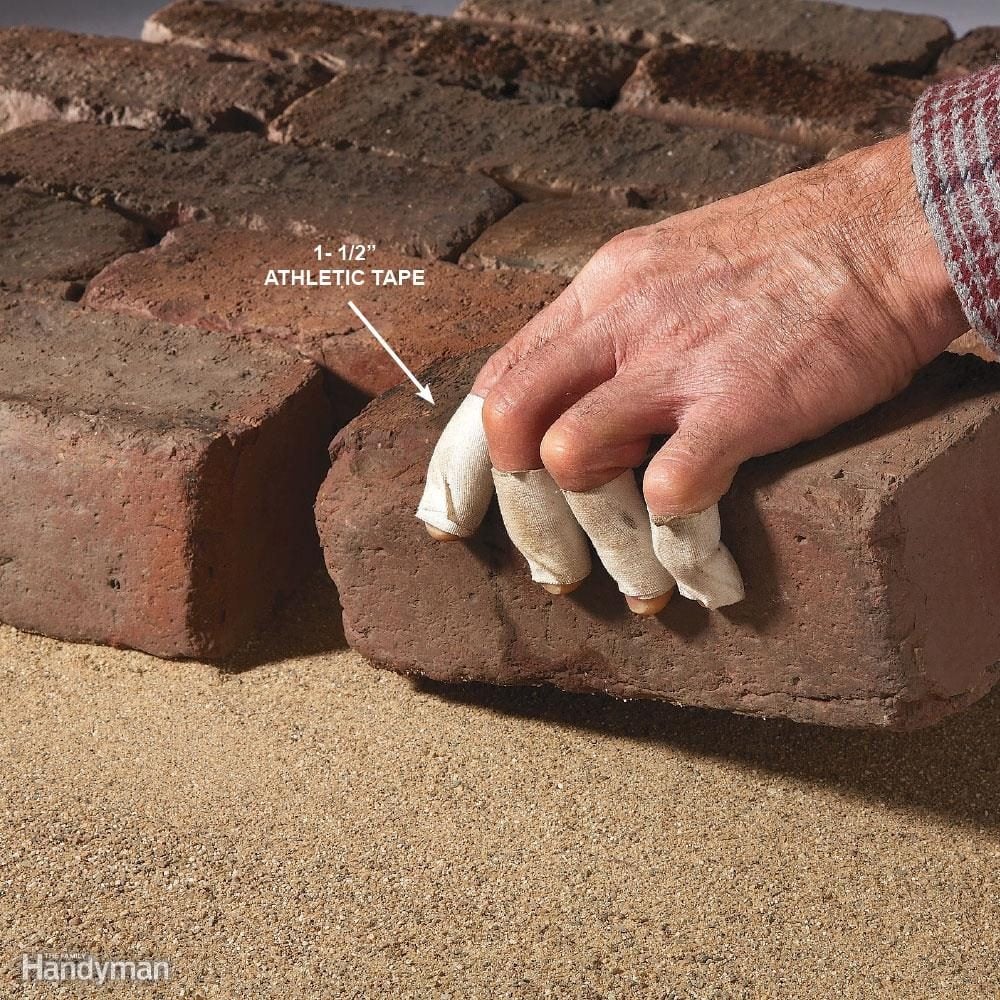
Protect Your Fingers
Handling brick or stone all day can scrape the skin off your fingertips, even to the point of bleeding. Cheap gloves can limit dexterity and wear out quickly.
If you don’t have good gloves for working with brick and stone, pick up a roll of 1-1/2-in.-wide athletic tape at the drugstore and put a few wraps of it around each of your fingers. You can still get a good grip on the bricks and your fingers won’t be raw at the end of the day.
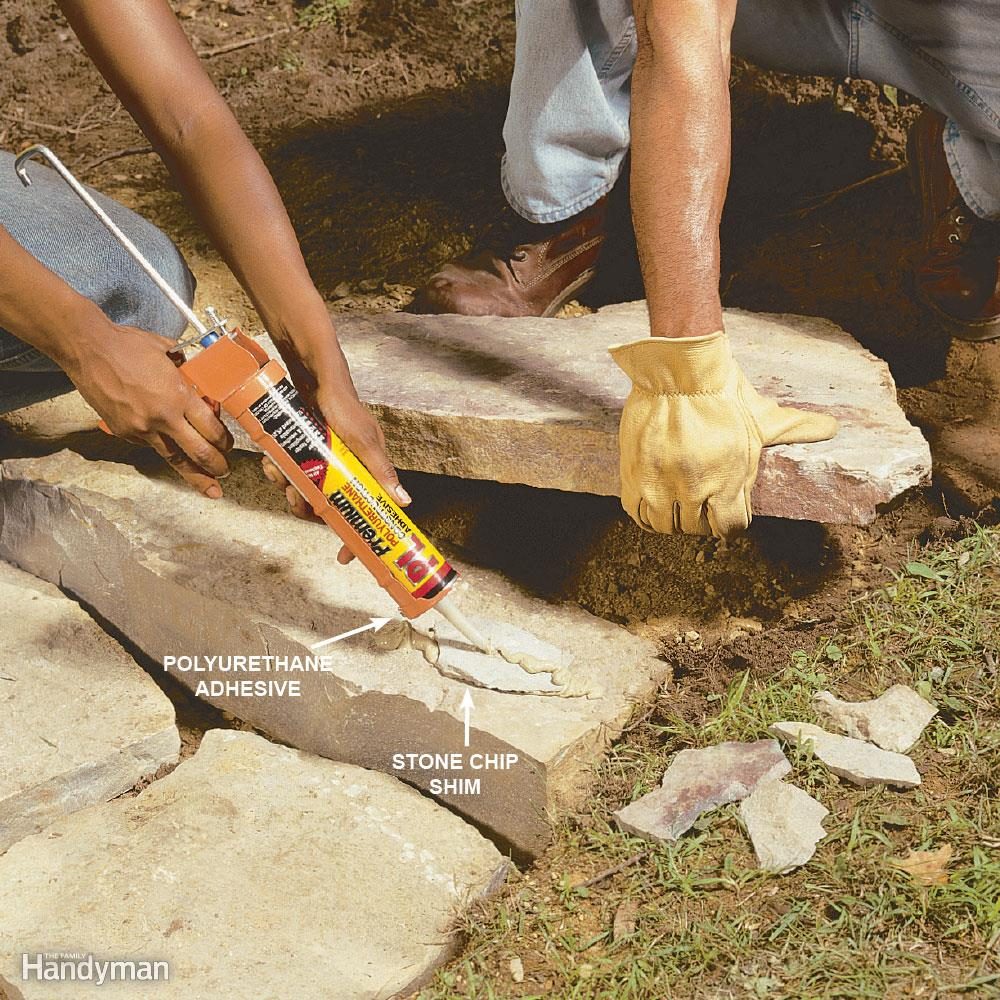
Skip the Mortar
Mortar is traditionally used to secure the top courses of stone on a wall. But polyurethane adhesive does the same thing without the hard work and mess of mixing mortar or the skill needed to trowel it on. Also, polyurethane stays flexible, so it doesn’t crack and fall out like mortar does. Combine stone chips with the adhesive to shim stones to keep them steady until the adhesive cures. Polyurethane adhesive is available at home centers and is at least as strong as dedicated landscape adhesives.
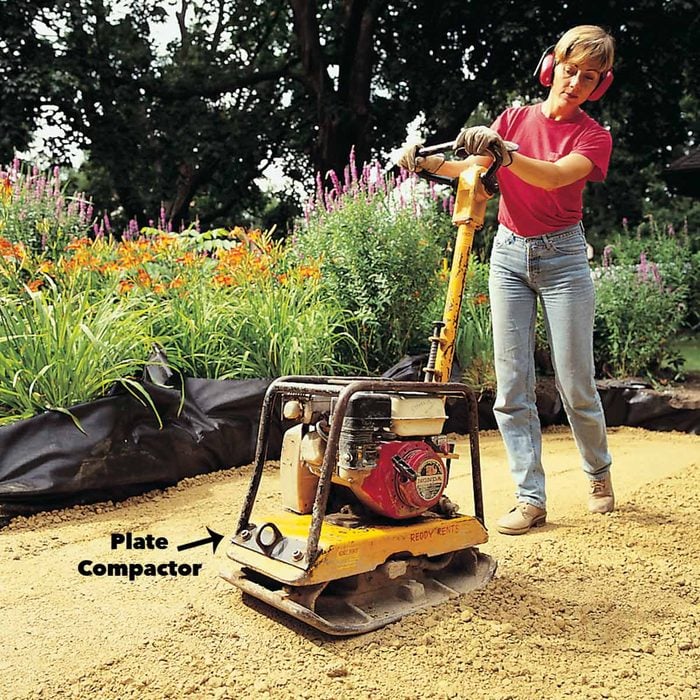
Pack Gravel in Layers
Depending on the type of soil, most paths, patios and walls require an 8- to 12-in.- deep compacted base of gravel. But if you just dump 8 in. of gravel into a trench and run a plate compactor over it, only the top few inches will be fully compacted. The uncompacted gravel will settle later, creating waves in the wall or path. For a fully compacted base that won’t settle, add the gravel in 2- or 3-in.-deep layers, and run the plate compactor over each layer before adding the next one.
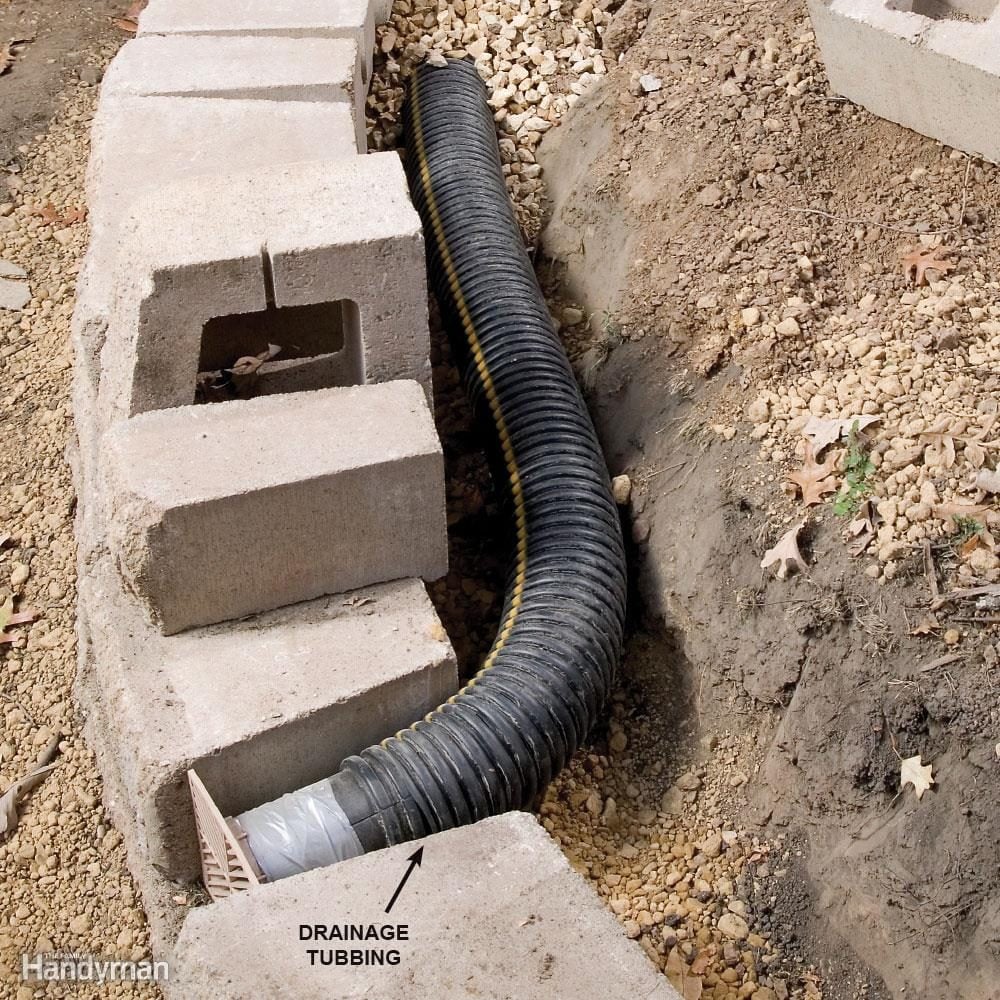
Build in drainage for long-lasting walls
Water-soaked soil is the worst enemy of retaining walls because it exerts enormous pressure behind the wall. Adding good drainage behind block or stone walls is crucial for long-lasting, bulge-free walls. Start by laying perforated plastic drainage tubing along the base of the wall slightly above ground level so it can drain to daylight. Slope the tubing about 1/4 in. per foot.
Then add outlets at about 16-ft. intervals. Cover the tubing with crushed stone. Then continue filling behind the wall with crushed stone as you build it.
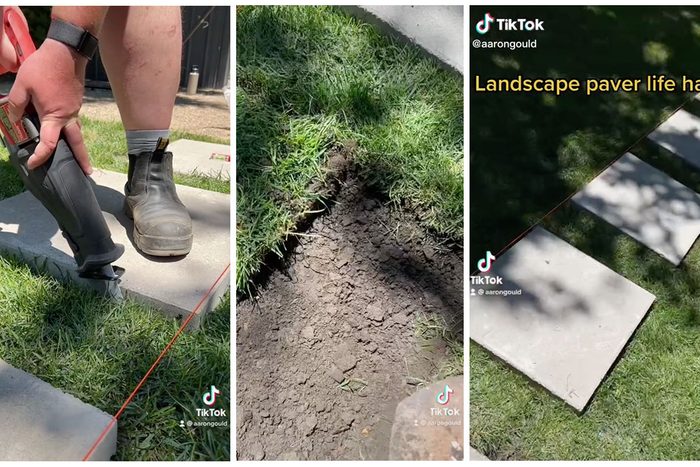
Make Digging Easier
If you’re installing a paver path, there’s no avoiding digging. However, you can save some time using this easy landscaping hack. Just lay the paver stones where you want them to go, and use a reciprocating saw to cut the sod around them. After that, move the pavers and dig out the hole deep enough for the stone and any compacting layer that needs to go underneath it. You can even reuse the grass and soil you cut away to repair patches elsewhere in the yard.

